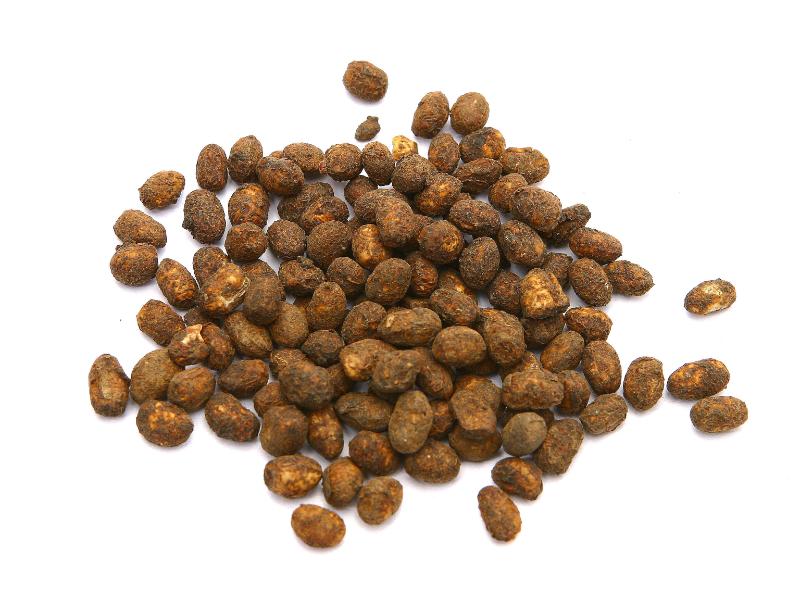Search in medicinals
Sojae Semen Praeparatum
Fermented soybean1
淡豆豉 〔淡豆豉〕 dàn dòu chǐ

Alternate English names: unsalted fermented soybean
Alternate Chinese names: 淡豆豉 dàn dòu shì
Kingdom: Plant
Origin in PRC Pharmacopoeia: Glycine max (L.) Merr. [= Glycine soja Benth.; Phaseolus Max L.]
Origin in unofficial sources: Glycine max (L.) Merr. [= Glycine soja Benth.; Phaseolus Max L.]
Use: Medicinal
Category: Exterior-resolving agents / Cool acrid exterior-resolving agents
Properties: Acrid, sweet, slightly bitter; cold.
Channel entry: Lung and stomach channels.
Actions and indications:
- Resolves the exterior: External contraction of wind-cold or wind-heat, with heat effusion, aversion to wind or cold, and headache.
- Eliminates vexation: Sleeplessness, heart vexation, and oppression in the chest.
Dosage and method: Oral: 10–15g in decoctions. The product used in medicine is unsalted; a salted version of this product is used in Chinese cooking.
Notes: Do not use the salted variety used in cooking.
Product description: The medicinally used fermented soybean is one that has been cooked and fermented according to various methods and with different additives (such as mulberry leaf and sweet wormwood, or perilla leaf and ephedra). It is elliptical, slightly flat, 0.6–1 cm long, and 3–6 mm wide. The outer skin is black with irregular yellowish wrinkles and a thin grayish-brown coating. It is loose, and in some cases has been stripped away to reveal the seed. This product is easily broken, exposing a cross section that is lighter in color than the skin. It has the smell of rot and a sweet flavor. Regular fermented soybeans used for culinary purposes differ by being salted and frequently sold moist, with the juice.
Quality: The best quality is black with a membranous coating.
Production area: Manchuria, Shāndōng, Héběi.
Etymology: The name dàn dòu zhǐ 淡豆豉 means unsalted fermented soybean,
reflecting how medicinal fermented soybeans differ from those used in cooking by being unsalted.